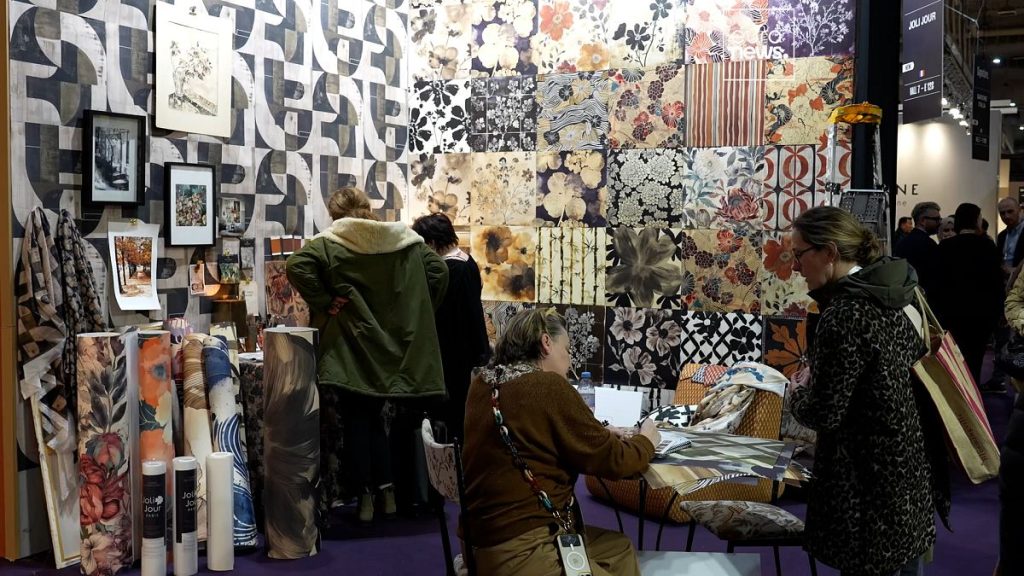Wallpaper, once a staple of interior design, experienced a period of decline, often perceived as outdated or overly fussy. However, recent years have witnessed a remarkable resurgence of this decorative element, driven by innovative design, sustainable practices, and a desire for personalized spaces. This revival is evident at prominent design fairs like Maison&Objet, where wallpaper manufacturers showcase their latest creations, highlighting the transformative power of wallcoverings to create immersive and expressive environments. No longer relegated to traditional patterns and materials, contemporary wallpaper embraces a wide spectrum of aesthetics, from minimalist geometric prints and bold botanical motifs to textured surfaces and digitally printed murals that mimic natural elements like wood, stone, and marble. This versatility allows wallpaper to cater to diverse tastes and seamlessly integrate into various interior styles, from classic to contemporary, adding depth, character, and a touch of artistry to any space.
The renewed interest in wallpaper is not solely driven by aesthetics; sustainability plays a crucial role in its current popularity. Consumers are increasingly conscious of the environmental impact of their decorating choices, and wallpaper manufacturers have responded by adopting eco-friendly practices. This includes utilizing responsibly sourced materials like recycled paper, water-based inks, and sustainable forestry practices. Furthermore, many brands are exploring innovative materials such as natural fibers, grasscloth, and cork, offering unique textures and visual appeal while minimizing their environmental footprint. The focus on sustainability extends beyond materials to the production process itself, with some manufacturers implementing closed-loop systems to reduce waste and minimize their carbon emissions. This commitment to sustainability aligns with the growing consumer demand for ethical and environmentally responsible products, further fueling the wallpaper renaissance.
Beyond the material itself, the designs and application techniques of modern wallpaper have also evolved significantly. Digital printing technologies have revolutionized the industry, enabling designers to create highly detailed, customized patterns and even reproduce artworks or photographs as wall murals. This opens up a world of possibilities for personalization, allowing homeowners and designers to create truly unique and bespoke spaces. Moreover, advancements in adhesive technology have simplified the installation and removal process, making wallpaper a more practical and less permanent decorating solution. Peel-and-stick wallpaper options, for example, offer a hassle-free way to update a room without the commitment of traditional paste-the-wall methods, appealing to renters and those who enjoy frequent décor changes.
The versatility of wallpaper extends beyond residential applications, with its increasing use in commercial spaces like hotels, restaurants, and offices. In these settings, wallpaper can contribute to creating a distinct brand identity, enhancing the ambiance, and defining specific zones within a larger space. From vibrant patterns that energize a reception area to calming botanical prints that create a tranquil atmosphere in a spa, wallpaper offers a powerful tool for shaping the mood and aesthetic of a commercial environment. Additionally, the durability and ease of maintenance offered by certain wallpaper types make them a practical choice for high-traffic areas. This ability to combine aesthetic appeal with practical functionality further solidifies wallpaper’s position as a versatile design element in both residential and commercial settings.
The resurgence of wallpaper is not merely a fleeting trend; it represents a fundamental shift in how we approach interior design. Wallpaper is no longer viewed as a mere decorative afterthought but as an integral element in creating a cohesive and expressive space. It offers a unique opportunity to inject personality, tell a story, and transform a room into a reflection of individual style. Whether it’s a bold statement wall featuring a dramatic mural or a subtle textured wallpaper that adds depth and warmth to a room, wallpaper provides an unparalleled level of customization and artistic expression. This ability to curate a space through the careful selection of wallpaper designs and textures speaks to a broader desire for personalized interiors that reflect individual tastes and create a sense of belonging.
In conclusion, the revival of wallpaper is a testament to its enduring appeal and its capacity to adapt to evolving design sensibilities and environmental concerns. Driven by innovative designs, sustainable practices, and advancements in printing technologies, wallpaper has firmly established itself as a versatile and dynamic element in contemporary interior design. From minimalist prints to intricate murals, wallpaper offers a vast spectrum of aesthetic possibilities, allowing homeowners and designers to create truly unique and personalized spaces. Furthermore, the commitment of manufacturers to eco-friendly materials and production processes aligns with the growing consumer demand for sustainable décor solutions. As wallpaper continues to evolve and innovate, it promises to remain a powerful tool for shaping the interiors of the future, adding depth, character, and a touch of artistry to spaces both residential and commercial.














